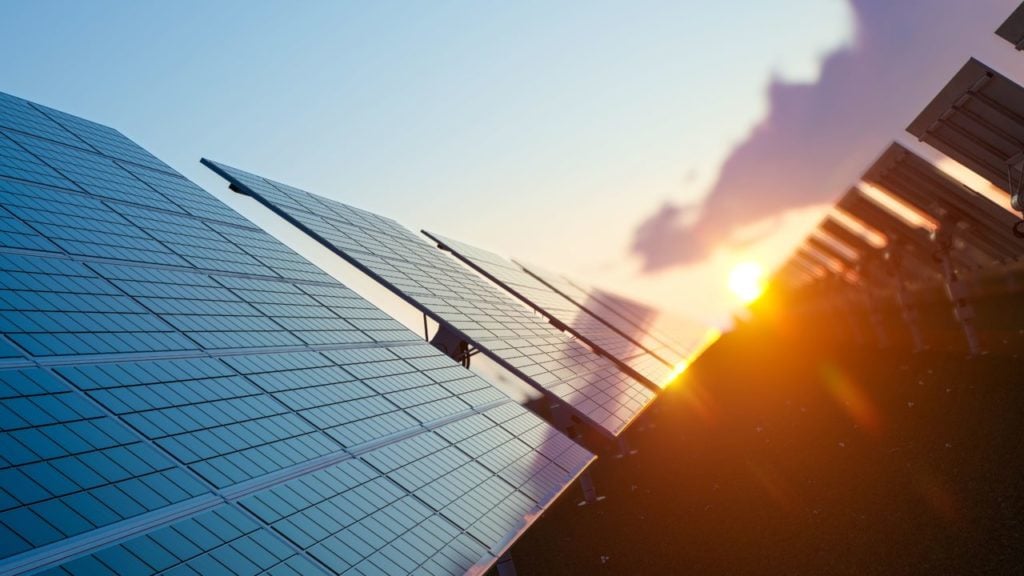
Europe imported around 33GW of solar PV modules from China in the first four months of 2024, representing 43% of total Chinese module exports, according to US energy analyst Clean Energy Associates (CEA).
Its PV Supply, Technology, and Policy Report for Q2 2024 examines the market landscape for supply and policy in Europe and the US, the global silicon supply chain, and technological trends.
Try Premium for just $1
- Full premium access for the first month at only $1
- Converts to an annual rate after 30 days unless cancelled
- Cancel anytime during the trial period
Premium Benefits
- Expert industry analysis and interviews
- Digital access to PV Tech Power journal
- Exclusive event discounts
Or get the full Premium subscription right away
Or continue reading this article for free
The import statistics for Europe sit alongside CEA’s observation that “European PV supply is shrinking as many long-standing suppliers closed production or filed bankruptcy due to failure to compete with imports.”
Companies like cell and module manufacturer Meyer Burger, Norwegian ingot producer NorSun and polysilicon producer REC have all either paused or abandoned European facilities in the last twelve months as a result of unsustainable market conditions.
In its assessment of Europe’s policy offerings to support solar manufacturing, CEA was reserved in its praise. It identified three major policies which could support solar production: the Forced Labour Ban, the Net Zero Industry Act (NZIA) and the Critical Raw Materials Act.
The NZIA entered effect in late June with a view to reaching 30GW of PV manufacturing capacity across the value chain. CEA said: “This regulation will facilitate easier investment conditions for manufacturers, however, without financial incentives for any technology, its overall impact is reduced.
It continued, saying that the EU will need “huge funding packages” in the style of the US’ Inflation Reduction Act (IRA) if it is to compete with supply chains from China or Southeast Asia, “which, at this moment, is not hinted at or expected.”
The NZIA includes provision for “non-price criteria” in public auctions which will support EU-made solar products, but direct funding on the scale of the IRA is absent.
The Forced Labour Ban will not take effect until 2027, by which point CEA said will give suppliers “enough time to evaluate supply chains and ensure they are compliant with the regulation.” The ban also puts the “burden of proof” on the European Commission, rather than the external importers, which can pose difficulties in terms of supply visibility. Advocates have claimed that the burden of proof must be reversed if supply visibility laws are to be successful.
The report also contained information on the expansions of the top seven Chinese PV module producers, around 40% of which (based on the year’s statistics) will be shipped to Europe. Without exception, Jinko, LONGi, Trina, JA Solar, Tongwei, Canadian Solar and Astronergy are planning to expand their shipments in 2024 compared with 2023, to a total of 525GW by CEA’s estimate.
CEA also said that global module and cell production capacity will each expand by more than 300GW this year in addition to around 600GW of new polysilicon capacity. Global production capacity is already well in excess of demand, and a Bloomberg New Energy Finance (BNEF) report from January said that no new solar production capacity was needed to meet global targets for the rest of the decade.
US trade situation
The report also looked into the trade and policy situation affecting the buildout of manufacturing capacity in the US.
It said that the threat of new antidumping and countervailing duty (AD/CVD) tariffs and the removal of an exemption for bifacial solar modules to the US’ Section 201 tariffs are keeping US module prices high and “further bolsters the economic case for US manufacturing.”
By contrast, PV Tech head of research Finlay Colville said recently that Europe offers virtually “no barrier” to entry for Chinese solar modules and that, as such, a price increase in the European market is “hard to imagine”.
This week, CEA published a dedicated analysis of the US’ trade policies which showed that a new AD/CVD case could increase US module prices by up to US$0.15/watt, as imported cells would become more expensive.
In today’s report, CEA said that the “likely” domestic supply scenario in the US will see module capacity meet domestic demand by 2030, but cell capacity will not keep up. As such, the US will rely on imported cells (around 50% of which currently come from the four Southeast Asian countries likely to be affected by AD/CVD) which will become more expensive.
The full report can be read here. It also contains analysis of the impacts of hail on PV systems and the emerging trend of TOPCon production amongst the major Chinese manufacturers.






